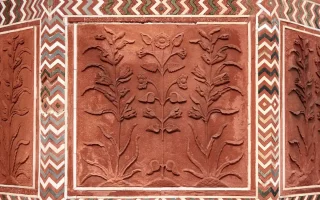Floor-to-ceiling windows create dramatic views and flood rooms with natural light. These architectural features demand curtains that enhance their grandeur while providing practical benefits. The best curtains for floor-to-ceiling windows are those made from lightweight materials like linen or sheer fabrics in neutral colours such as white, grey, or beige, which maintain an airy atmosphere while offering privacy.
Selecting the perfect window treatments involves careful consideration of both style and function.If you want to choose the perfect type of curtain that fits seamlessly and complements the space, you can explore Direct Fabrics’s supplies of wave curtains, which can ensure a flowing design for your home. The tailored fit of these curtains provides a stylish, modern look while allowing easy adjustment of light and privacy. Furthermore, these options are durable and smooth to operate, making them a good choice for large windows. With their clean lines and soft folds, wave curtains effortlessly enhance the overall ambiance of the room.
Key Takeaways
- Lightweight, neutral-coloured curtains optimize the natural light and aesthetics of floor-to-ceiling windows
- Wave-style curtains create clean lines and contemporary elegance in modern spaces
- Professional mounting near the ceiling maximizes visual height and enhances room proportions
Choosing the Right Curtains for Floor-to-Ceiling Windows
Selecting appropriate curtains for floor-to-ceiling windows requires careful consideration of fabric weight, light filtration, and installation requirements. The right choices enhance both the aesthetic appeal and functionality of these dramatic architectural features.
Considering Fabric and Colour
Lightweight fabrics like linen and sheer curtains create an airy, elegant atmosphere while allowing natural light to filter through. These materials work exceptionally well in living spaces and dining rooms.
Heavy fabrics such as velvet offer superior insulation and sound dampening properties. These materials suit rooms requiring more privacy or temperature control.
Neutral colours remain the most versatile choice. Beige, ivory, and white curtains complement any décor style while maintaining a timeless appeal.
Grey tones, from light to charcoal, provide a modern alternative that pairs well with contemporary interiors.
Layering different fabrics, such as sheer white curtains behind heavier drapes, creates depth and flexibility in light control.
Understanding Privacy and Light Control
Blackout curtains in grey, green, or other dark shades provide maximum privacy and light blocking capabilities. These prove essential for bedrooms and media rooms.
Light-filtering options like cream or tan curtains offer moderate privacy while maintaining a bright atmosphere during daylight hours.
Consider double-track systems that combine sheer and blackout panels for adjustable privacy levels throughout the day.
Grid patterns and subtle textures can add visual interest while maintaining privacy without becoming overly bold or distracting.
Assessing Installation and Rod Options
Rod Placement:
- Mount 10-15 cm above window frame
- Extend 15-20 cm beyond window width
- Ensure proper support for heavy fabrics
Hardware Requirements:
- Heavy-duty brackets
- Centre supports for spans over 150 cm
- Professional installation recommended
Select curtain rods that can support the weight of your chosen fabric, particularly for heavier materials like velvet or blackout curtains.
Exploring Patterns and Textures
Striped patterns, particularly in white and grey combinations, create vertical interest that emphasizes ceiling height.
Subtle textures like linen weaves add depth without overwhelming the space. These work particularly well in neutral shades like beige or ivory.
Consider these pattern options:
- Geometric grids for modern spaces
- Subtle weaves for traditional rooms
- Vertical stripes for height emphasis
- Solid textures for versatility
Avoid busy patterns that might compete with other design elements in the room.
Maximizing Functionality and Energy Efficiency
Floor-to-ceiling windows require specialized treatment solutions to manage heat loss and gain while maintaining their aesthetic appeal. Strategic window coverings can significantly reduce energy costs and enhance comfort.
Insulation and Energy Saving Benefits
Thermal curtains with multiple layers provide superior insulation, achieving R-values up to 3 times higher than standard window treatments. These specialized curtains create an effective barrier against heat transfer.
Blackout curtains with thermal liners offer dual functionality by blocking light completely and reducing energy loss. The air pocket between the window and curtain acts as an additional insulation layer.
High-quality thermal curtains can reduce heating and cooling costs by 15-25% when properly installed from floor to ceiling. Full-length panels prevent drafts and cold air infiltration at window edges.
Innovative Window Treatment Solutions
Motorized shades offer precise control over natural light and heat gain throughout the day. These automated systems can be programmed to adjust based on sunlight intensity and temperature changes.
Popular Energy-Efficient Options:
- Multi-layered thermal drapes
- Cellular shades with honeycomb design
- Light-filtering sheers with blackout panels
- Insulated Roman shades
Custom-fitted panels ensure maximum coverage and minimal heat loss around window frames. Professional installation helps eliminate gaps that compromise energy efficiency.
Light-filtering layers combined with thermal backing create versatile solutions that balance natural light with temperature control. This dual-layer approach maintains views while managing solar heat gain.
Conclusion
Floor-to-ceiling windows demand thoughtful consideration when selecting window treatments. Drapes and curtains offer versatile style options, while motorized blinds provide convenient control and energy efficiency benefits.
The ideal window treatment balances privacy needs, light control, and aesthetic preferences. Blackout curtains, sheer panels, and automated shades each serve specific purposes, giving homeowners the flexibility to create their desired atmosphere while maintaining comfort and functionality.




